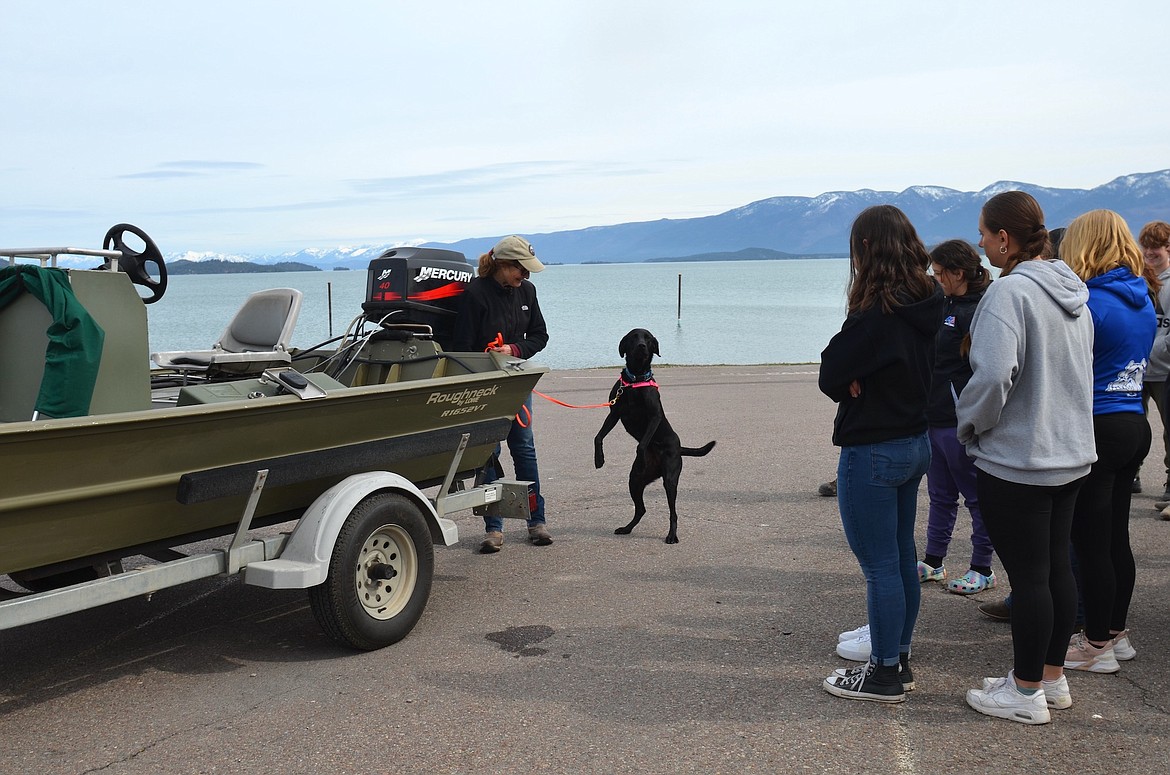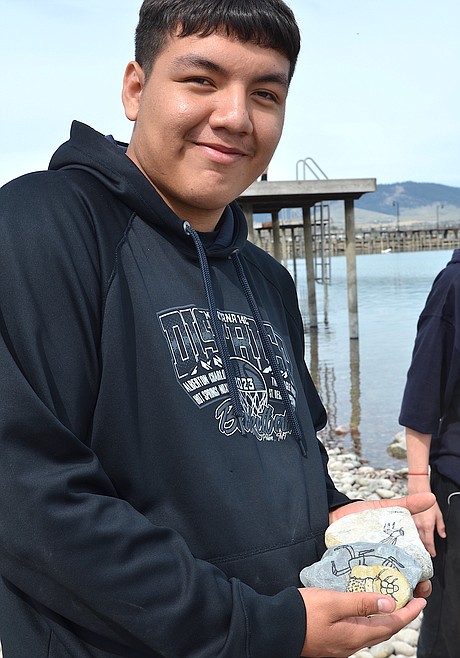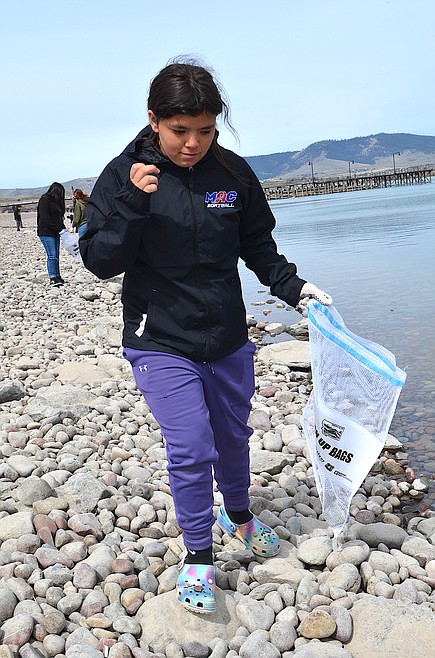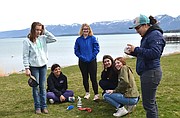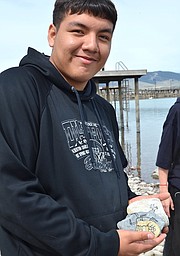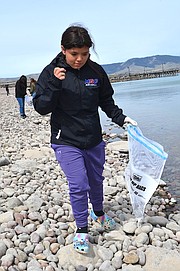Mussel Walk: Students learn to defend Flathead from AIS
Students from St. Ignatius High and Two Eagle River School in Pablo learned about the scourge of Aquatic Invasive Species (AIS) during a recent Mussel Walk – one of three scheduled this spring along the shores of Flathead Lake.
Sponsored by the Confederated Salish and Kootenai Tribes in tandem with the Flathead Lake Biological Station, the event at Salish Point stressed the importance of identifying invasive species and protecting the lake and other waterways. Students were shown how to “clean, drain and dry” watercraft, fishing gear, footgear and water toys in an ongoing effort to keep the nasty little creatures from infesting the still pristine Flathead Basin.
Students first visited four stations, where they learned to identify and find AIS. Perhaps the most popular was the exhibit featuring Dora and Ismay of Montana Black Dog Services. Under the direction of their handler, Debra Tirmenstein, the two dogs sniffed around a fishing boat and an inflatable kayak, looking for fake mussels used as training decoys.
“It’s a fun thing,” said Tirmenstein of her enthusiastic accomplices. “We say it’s work but to them it’s a good time.”
She noted that in addition to boats, fishing gear, waders and anchors are all places where quagga and zebra mussels hitch a ride. Her dogs “have to learn to check objects like that as well since mussels can be almost anywhere,” she said.
Dora, the younger and less experienced of the two, whined as she sniffed the perimeter of a fishing boat. “She’s telling me she’s found a mussel and she wants her treat,” explained Tirmenstein.
Montana Black Dog Services has been helping keep the Flathead and other regions stay mussel-free for about seven years now. Termenstein and her dogs, who are tested and certified before they go to work, often team up with the Biological Station at Yellow Bay, provide shoreline and boat inspections, and offer educational programs.
Students also gained hands-on instruction on the motto “Clean, Drain and Dry” when they were tasked with mucking out a plastic bottle in just one minute using a sponge, spray bottle and scrubber.
Phil Matson, a research coordinator at FLBS, explained that baby zebra and quagga mussels are microscopic, and often reside undetected in the bilge water that collects in the bottoms of boats. “They can live in a pool of water for up to three days in the right condition so that’s why draining that bilge water is so important,” he said.
Matson noted that aquatic invasive plants such as Eurasion water milfoil can also be carried from one waterway to the next via boats and fishing gear. Milfoil has been found in Pablo Reservoir and Beaver Lakes near Whitefish.
“If you pluck off a little leaf of that plant and put it in a bucket of water if can grow into a new plant and multiply,” Matson said. “It can grow so thick in a water body that it gets caught up in propellers and people actually drown trying to swim through it. We definitely don’t want something like that in here.”
Flathead Lake is already infested with flowering rush, an invasive plant with pink flowers that’s clogging bays and waterways. Boaters could unintentionally transport it from one bay to another just by catching a little on their propeller.
“Anytime you take a boat off the lake, you should clean, drain and dry just to be safe,” Matson said.
At another station, kids learned how non-native fish, like lake trout, have impacted the lake’s fisheries by disrupting native bull trout and cutthroat populations.
At a fourth station, students inspected boats, “like our inspectors would at the boat inspection station,” trying to find fake mussels and plants. They also looked over innertubes, kayaks and fishing waders “learning where can these things hide on different vessels we put in and out of our waters,” said Stephanie Hummel, also of FLBS.
Finally, students spread out along the shoreline to test their newfound knowledge by searching for 3D-printed mussels and rocks stamped with various native and invasive species. They also collected trash along the way.
Katie Finley-Squeque, the Aquatic Invasive Species manager for the Tribes, organizes this event and other outreach efforts. She also oversees AIS check stations in Ravalli and Thompson Falls, and water sampling efforts with Montana Fish, Wildlife and Parks and the Biological Station. She sees working with students as an investment in the future.
“We educate the youngsters so when they’re grown up they know how important it is to keep aquatic invasive species out of our waters because, for the most part, once they’re here we can’t get rid of them.
“It’s all about the youth,” she adds. “For the younger generation to learn and keep it going.”


